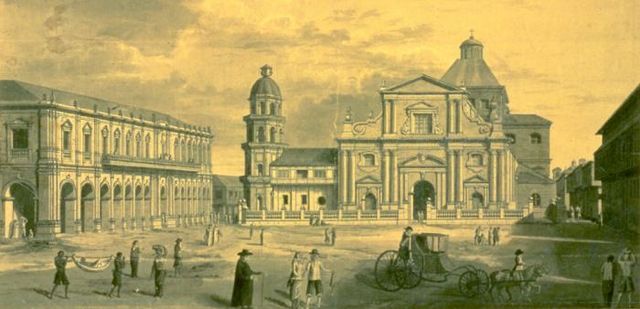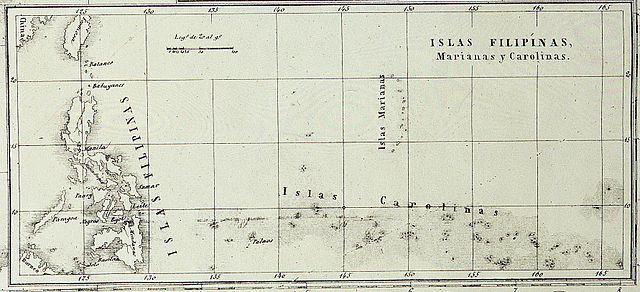The Laws of the Indies are the entire body of laws issued by the Spanish Crown for the American and the Asian possessions of its empire. They regulated social, political, religious, and economic life in these areas. The laws are composed of myriad decrees issued over the centuries and the important laws of the 16th century, which attempted to regulate the interactions between the settlers and natives, such as the Laws of Burgos (1512) and the New Laws (1542). Throughout the 400 years of Spanish presence in these parts of the world, the laws were compiled several times, most notably in 1680 under Charles II in the Recopilación de las Leyes de los Reynos de las Indias. This became considered the classic collection of the laws, although later laws superseded parts of it, and other compilations were issued.
Council of the Indies royal emblem
Colegio de San Gregorio, Valladolid
Colegio de San Gregorio, where the Laws of the Indies were born
The plaza, or city square, of Manila, Philippines
The Spanish East Indies were the colonies of the Spanish Empire in Asia and Oceania from 1565 to 1901, governed through the captaincy general in Manila for the Spanish Crown, initially reporting to Mexico City, then Madrid, then later directly reporting to Madrid after the Spanish American Wars of Independence.
Reception of the Manila galleon by the Chamorro in the Ladrones Islands, Boxer Codex (c. 1590)
Routes of early Spanish expeditions in the Philippines.
Manila, capital of the Spanish East Indies, 1899.
The Spanish Empire's "Islas Filipínas, Marianas y Carolinas" under the Spanish East Indies Captaincy General based in Manila and other formerly planned and former possessions and adjacent islands. 1858, Fragment.








